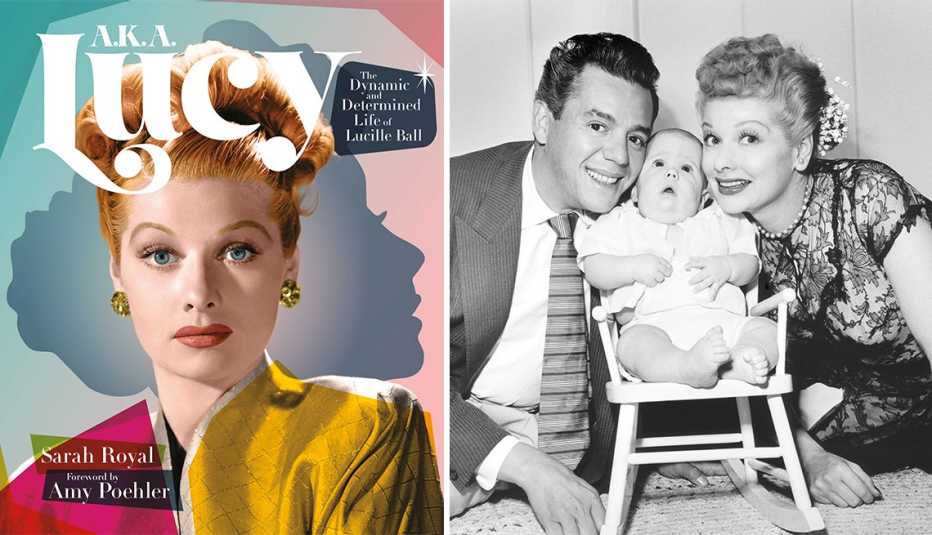AARP Hearing Center


A gorgeous redhead with big blue eyes, a goofy grin and a fondness for tomfoolery, pranks and pratfalls, Lucille Ball as Lucy Ricardo invited Americans into her world on the CBS sitcom I Love Lucy, and Americans took her into their hearts. She’s still there, for many of us — nearly 35 years after she passed away at age 77.
Now Ball’s fans can learn more about the comedic icon in a new biography from pop culture historian Sarah Royal, A.K.A. Lucy: The Dynamic and Determined Life of Lucille Ball, publishing Oct. 10. It’s a delightful escape, with many of its 240 pages adorned with full-page graphics and brightly colored illustrations.
Royal, who studies women in comedy and cohosts a podcast about The Golden Girls called Enough Wicker, describes her book as a “vignette-style exploration of Lucy’s life and career, where chronology occasionally takes a backseat to theme.”
Those themes include Ball’s hardscrabble growing-up years; the early death of her father; her deep-seated insecurity and willingness to work to exhaustion; her marriage to Cuban-born Desi Arnaz (who costarred as her husband Ricky Ricardo on I Love Lucy); and her unprecedented success as a woman entertainer in midcentury Hollywood.
Here are some things you might not know about Ball — as well as Arnaz and I Love Lucy, which debuted in 1951 — that are addressed in the book:
1. Ball nearly starved while starting her career in New York City.
After appearing in plays in Jamestown, New York, where she was born, she headed to the big city in her early 20s hoping to break into vaudeville, even as the entertainment form was fading. Instead, she worked as a model and had so little money, she made “tomato soup” out of watered-down ketchup and swiped uneaten doughnuts from departed diners’ plates at coffee shops.
2. She wanted to be more than a pretty face.
The aspiring actress was hired to appear in filmmaker Samuel Goldwyn’s film Roman Scandals (1933), starring comedian Eddie Cantor, as one of a dozen “Goldwyn Girls” — young women paid to stand around looking pretty in the background of the movie. It inspired her to play up her comic skills — “even if that meant volunteering to get a pie in the face or seltzer up the nose,” Royal writes. Cantor was impressed: “That Ball dame, she’s a riot,” he reportedly said.



































































More From AARP
Treasures From the Bob Dylan Vault
See exclusive photos, artifacts
BET’s Sheila Johnson Details Her Business Triumphs and Personal Betrayals in ‘Walk Through Fire’
America’s first Black female billionaire, 74, discusses her new memoir with AARP
Inside the Mind of Elon Musk: What We Learned From His Biography
Walter Isaacson's bio answers many questions about the tech mogul